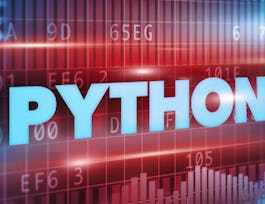Why You Should Learn Linux
As per Stack overflow’s insights, the most common and the most loved platform happens to be Linux. If you do a quick search online on Linux you’ll see some interesting statistics. All of the fastest 500 supercomputers in the world run on Linux. 96.3 percent of the top 1 million web servers run on Linux. And 86% of all smartphones are powered by Linux. In the cloud and DevOps world, many of the new tools are developed and used in Linux environments first before they are made available on Windows. For example, containerization tools like Docker were only available on Linux-based systems for many years before being supported on Windows platforms. Similarly, automation tools like Ansible are required to be installed in a Linux environment. Even though Ansible can manage Windows systems as target machines, a Linux system is required to be the Ansible controller. Learn Linux to Further Your DevOps Career The demand for DevOps and Cloud engineers is growing exponentially with each passing year. Every new job position now requires having knowledge of at least a few DevOps tools and at least one of the major cloud providers. As more and more organizations are adopting Devops and running their workloads in the cloud, fundamental understanding of Linux is a must. Especially if you have been working in a windows dominated environment. What You Will Learn in KodeKloud’s Linux Course Some of the most common challenges our students report while learning DevOps are: 1. Trouble navigating the Linux CLI 2. Lack of experience with the linux command line 3. Trouble navigating directory structures and working with files 4. No experience in working with text editors like VI editor 5. Handling errors during installation of applications and dependencies and configuring software repositories 6. Issues with networking and DNS in Linux 7. Knowing when to use sudo, and how to configure permissions 8. Having sufficient hands-on experience working with Linux That is why we built this Linux course. We aim to help you get your foundations right and help you with these common struggles many developers face. In this Linux course, you’ll join Bob (a fictional character), who is a new intern at a fictional company named Caleston Technologies. Bob is tasked to build and deploy an application for a client demo. Bob is new to Linux and faces numerous challenges while working on his laptop and servers. You’ll join Bob throughout this Linux course to learn the OS's basics and fundamentals. Get Hands-On Experience Programming in Linux All of our lectures use visualization techniques and analogies to simplify complex concepts. This makes the concepts easy to grasp and remember in the long term. Each lecture in this Linux course is followed by our hands-on labs, where you will be given challenges to solve. The labs open up right in your browser, so there is no hassle of setting up environments to practice. You start practicing seconds after the lecture is complete. The labs are fun to work with and give you challenges to solve. Once you solve these challenges, we will validate your work and give you feedback on where you went wrong. If you are not sure how to solve a problem, use the hints to solve them. The most important thing while learning Linux, especially the Linux command line, is practice. The hundreds of questions in our labs throughout this course will give you enough hands-on practice to be confident in Linux. Course pre-requisites: There are no pre-requisites for this course A laptop with a browser to work on the labs




 enthalten
enthalten













